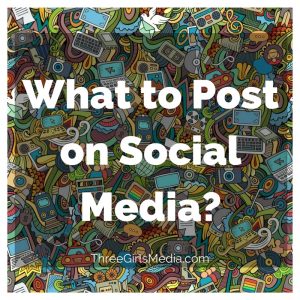Contrary to what you may hear from some marketing pundits, email marketing has been more effective than it has ever been. Email marketing spend continues to grow, and is expected to exceed $ 2.5 billion in 2017, with more than 294 billion emails sent daily. Now, with more people reading emails on mobile devices than ever before (47% of emails), it’s a channel that you just can’t ignore if you want to reach customers. Simply put, email is one of the most powerful marketing tactics.
According to the Direct Marketing Association, the average ROI is 40:1. Research by Message Systems found that 63% of marketers cite email as the channel that offers the best ROI and email marketing is the most trusted form of communication with 77% of consumers choosing email over other online channels. When appropriately targeted, email marketing can be one of the best ways to tell your brand story to your audience, and more importantly, it gives them a way to immediately engage with your brand.
Please note that the key phrase in the paragraph above is appropriately targeted.
It turns out that ignoring these two words is a pitfall for many marketers – and I would argue that it’s one of the reasons why email marketing gets such a bad rap these days.
What exactly is this email marketing mistake that we all make?
We indiscriminately send one email to our entire database.
That’s right. Many marketers do not segment their database and they blast emails out to their entire list hoping that some percentage of readers will open, read, and take action. What actually happens when an audience member receives one of these irrelevant emails?
According to a recent study by Campaigner:
- 60% delete the email
- 27% unsubscribe from the brand
- 23% mark the email as Spam
In short, it doesn’t work. And worse, it tarnishes your brand reputation and hamstrings your ability to create an authentic and productive relationship with your audience.
The good news?
You can avoid this mistake quite easily. By not making this mistake, you can increase email marketing revenue and deliver better value for your email subscribers.
How to avoid making this mistake?
It all starts with assuring that you have a clear idea of who you are targeting and a deep understanding of why they should even care about your offer. Over time, you need to progressively build up targeting profiles for your contacts and learn as much as you can about their demographics, needs, wants, and behaviors including their interactions with your brand, competitive brands, and their actual purchases.
Gathering this data is critical to creating compelling, personalized stories and content for your emails. Whether you have a sophisticated marketing automation platform or CRM system that enables you to build up this data over time, or even if you have to set up a spreadsheet, the power of any data you can get will be invaluable. With this data in hand, you now have the foundation for segmenting your email lists and generating more targeted, relevant and highly personalized emails. The likelihood of your audience opening these more tailored email messages, clicking through to your website, visiting your store or contacting you directly, is far greater than the indiscriminate “spray and pray” method.
What Results Can You Expect?
Bottom line: Developing a targeting strategy and segmenting your email list will increase your revenues.
According to a Jupiter Research Study, marketers who segment their lists can improve conversion rates up to 355% and increase revenues by an amazing 781%. Ironically, a small percentage of email marketers actually develop a targeting strategy and segment their lists. HubSpot analyzed more than 100,000 emails delivered through their platform on behalf of their customers and discovered that the average click-through rate for indiscriminate email blasts was 12% lower than the average click-through-rates for segmented lists. When you segment your email marketing database, not only will revenues grow, but all of your email marketing performance metrics will increase, as research by eMarketer found:
Email segmentation directly correlates to recipient behavior. Without it, most emails bounce or end up in the trash folder; with it, you stand a much better chance of enticing the reader to care, to learn more about your brand, and to purchase your product or service. You really can’t afford to miss out on the demand generation opportunities represented by email segmentation.
Photo credit: Flickr
Digital & Social Articles on Business 2 Community(47)
Report Post





